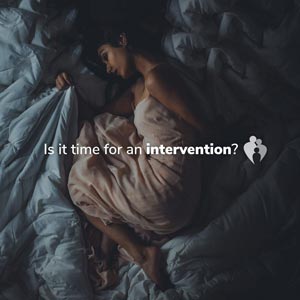What Mental Health Issues Require Dual Diagnosis Treatment?
Dual diagnosis treatment is used to treat and underlying condition which contributes to substance abuse – the majority of-which are classified as mental health disorders. Some of the disorders are more common (like depression or anxiety), and others are more rare and severe (like schizophrenia).
No matter how minor the mental health condition may seem to the sufferer or their family, these conditions must be recognized and addressed during addiction treatment, and the standard treatment type for treating this co-occurring disorders is through dual diagnosis treatment.
The following are examples of conditions that would require dual diagnosis treatment:
- Acute Stress Disorder
- Major Depressive Disorder
- Eating Disorders
- Adjustment Disorder (with anxious features)
- Agoraphobia
- Anxiety (Caused by a co-morbid medical condition)
- Generalized Anxiety Disorder (GAD)
- Obsessive-Compulsive Disorder (OCD)
- Panic Disorder (Chronic Panic Attacks)
- Post-Traumatic Stress Disorder (PTSD)
- Social Phobia (Social Anxiety Disorder)
- Specific Phobia (Simple Phobia)
- Bipolar Disorders
- Hypomanic Disorders
- Manic Disorders
- Mixed Specifier (Mixed Episode Disorders)
- Depersonalization Disorder
- Dissociative Amnesia
- Dissociative Fugue
- Dissociative Identity Disorders
- Dissociative Disorder (NOS – Not Otherwise Specified)
- Anorexia Nervosa
- Binge Eating Disorder
- Bulimia Nervosa
- Pica
- Circadian Rhythm Disorder (Sleep-Wake Disorder)
- Hypersomnolence (Hypersomnia)
- Insomnia Disorder
- Nightmare Disorder
- Narcolepsy
- Rapid Eye Movement (REM) Sleep Disorder
- Restless Leg Syndrome
- Non-Rapid Eye Movement Sleep Arousal Disorders (Night Terrors/Sleep Terrors & Sleepwalking Disorders)
- Autism (Aspergers, Spectrum Autism, Autistic Disorder, and Rett’s)
- Attention Deficit Hyperactivity Disorder (ADHD and ADD)
- Intellectual Disabilities
- Reading Disorders
- Separation Anxiety Disorders
- Social Communication Disorders
- Stuttering, Lisp (Speech Disorders)
- Tourette’s Disorder
- Transient Tick Disorders
- Antisocial Personality Disorder
- Avoidant Personality Disorder
- Borderline Personality Disorder
- Dependent Personality Disorder
- Histrionic Personality Disorder
- Multiple Personality Disorder (Dissociative Identity Disorder, Schizophrenia)
- Narcissistic Personality Disorder
- Obsessive Compulsive Personality Disorder
- Paranoid Personality Disorder
- Schizoid Personality Disorder
- Schizotypal Personality Disorder
- Personality Disorders
- Acute Depression
- Chronic Depression
- Acute Stress Disorder
- Postpartum Depression
- Somatic Symptom Disorders
- Alzheimer’s Disease
- Bereavement
- Body Dysmorphic Disorder
- Brief Psychotic Disorders
- Conversion Disorders
- Delusional Disorders
- Disinhibited Social Engagement Disorders
- Dysthymic Disorders
- Gaming Disorder (Gaming Addiction)
- Gender Dysphoria
- Hoarding Disorders
- Hypochondriasis (Illness Anxiety, fear of catching diseases)
- Germaphobia
- Intermittent Explosive Disorder
- Kleptomania
- Neurocognitive Disorders (Major and Minor Disorders)
- Pain Disorder (Chronic Pain)
- Parkinson’s Disease
- Pathological Gambling (Gambling Addiction)
- Premenstrual Dysphoric Disorder (PDD)
- Pyromania
- Reactive Attachment Disorder
- Trichotillomania
The Serious Need for Mental Health Interventions
Mental health conditions are progressive in nature, meaning that they will usually get worse over time, if they are not being treated. This makes identifying and receiving treatment for mental health conditions incredibly important. Yet, most that are afflicted with mental health conditions never seek treatment for those disorders.
Because those with depression, anxiety, and other co-occurring mental health disorders do not actively seek treatment for themselves, many times it is up to the loved ones and family of that individual to intervene and to prompt treatment.
Taking that big step of admitting there is a problem, and admitting that help is needed, is sometimes too big a step for an individual to take on their own. Even if the individual is suffering and passively asking for help, it usually takes the help of the whole family and those closest to the individual to prompt acceptance of help and dual diagnosis treatment.

 Intervention Helpline’s staff of certified intervention professionals have years of experience in helping families to address their loved ones mental health conditions, substance abuse issues, or both. Starting with an assessment, we find the basic needs that your loved one will require for treatment, work with families to make that treatment available, and proceed with mental health and dual diagnosis interventions alongside the family of the individual.
Intervention Helpline’s staff of certified intervention professionals have years of experience in helping families to address their loved ones mental health conditions, substance abuse issues, or both. Starting with an assessment, we find the basic needs that your loved one will require for treatment, work with families to make that treatment available, and proceed with mental health and dual diagnosis interventions alongside the family of the individual.







 All Rights Reserved |
All Rights Reserved |